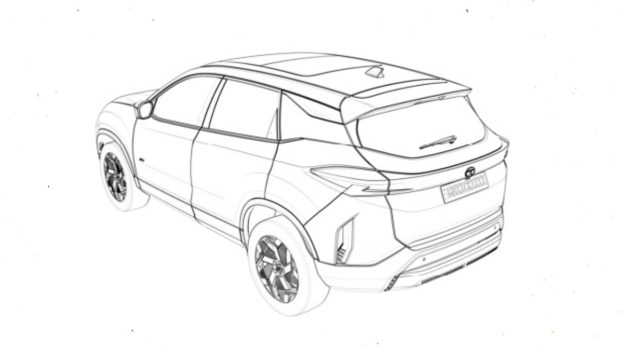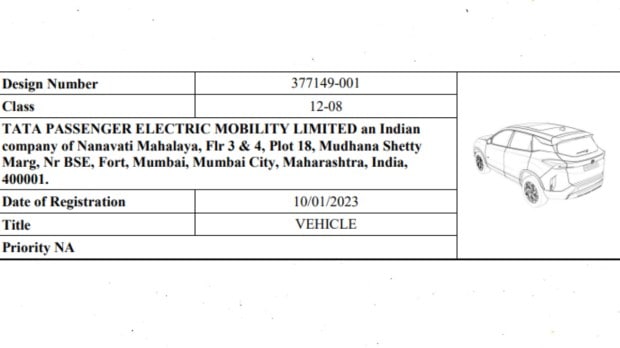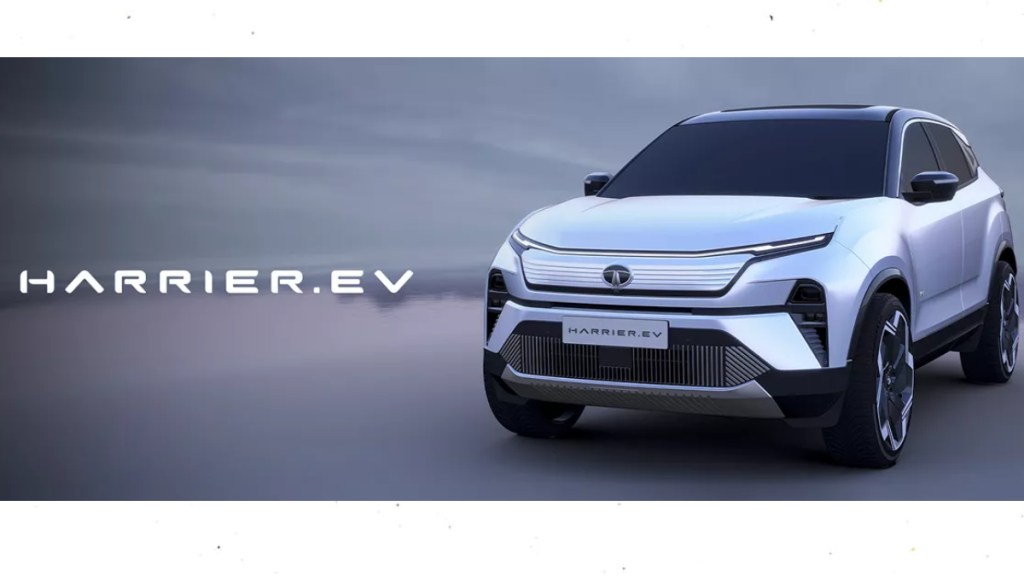Tata Motors has been planning its onslaught of electric vehicles (EV) range for a long time and it came into effect with the rebranding of the company’s EV vertical called Tata.ev. The first car launched under the rebranded entity was the updated Nexon EV in September last year.
The carmaker continued the trend with the Punch EV which launched last week, with a couple of more EV launches slated for 2024. These include the production version of the battery-powered Currv and the all-electric Harrier. Concept prototypes of both electric SUVs were showcased at the Auto Expo last year.
Tata Harrier EV: Expected design
Patent images of the upcoming Harrier EV have leaked on the internet. Tata Motors has apparently filed a design patent for the electric SUV in the Indian market. The latest patent image reveals plenty of styling elements from the all-electric Harrier, especially the rear-quarter of the SUV.

The profile and silhouette are identical to its ICE-powered sibling with highlights such as the receding roofline with roof rails, a strong shoulder line and thick all-black claddings on wheel arches and door sills that amplify the sportier stance of the mid-size SUV. The battery-powered Harrier also rolls on slightly different star-pattern diamond-cut alloy wheels as opposed to the spoke alloy wheels available in the diesel-powered Harrier.
Other visual highlights include a roof-mounted spoiler with an integrated brake lamp, a shark fin antenna, wraparound LED taillights, a chunky rear bumper with a faux skid plate, vertical LED reflectors, a gloss black panel across the width of the tailgate, and a panoramic sunroof. Images of the prototype revealed earlier confirmed that redesigned front fascia will be in sync with the facelifted diesel Harrier launched a few months ago.

Tata Harrier EV: Expected battery specs, range
Underpinning the upcoming Harrier EV is Tata’s Gen II EV architecture, an upgrade over the Gen I platform underpinning Nexon EV. The electric SUV is expected to feature multiple battery options ranging from 60 kWh to 80 kWh, offering a range of around 400-500 km on a single charge. There is still lack of clarity on motor specifications but we expect Tata to offer a dual-motor all-wheel-drive setup with the incoming Harrier EV.





















